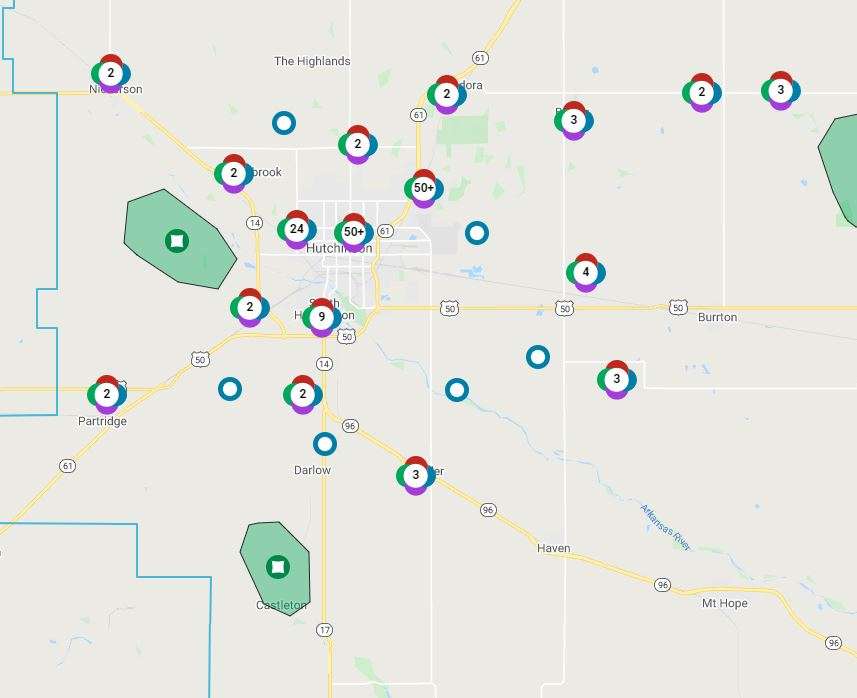
HUTCHINSON, Kan. — According to the Evergy Outage Map as of 5 a.m. Thursday, there were still over 2,600 customers without power in Reno County, including around 2,000 in and around Hutchinson.
Some of those outages were first reported early Wednesday afternoon.
A reminder that if the power outage in your home has lasted for more than four hours, even if it was closed, it's likely that your refrigerator was not able to keep food safe temperatures.
A closed, full freezer can keep food cold for up to 48 hours, with a half-full freezer doing so for 24 hours. Do not taste food to determine if it is still safe, when in doubt, throw it out.
According to the USDA, discard the following if your refrigerator has been without power for more than 4 hours:
raw, cooked, or leftover meat, poultry, fish, eggs, and egg substitutes;
luncheon meat and hot dogs;
casseroles, soups, stews, and pizza;
mixed salads (i.e., chicken, tuna, macaroni, potato);
gravy and stuffing;
milk, cream, yogurt, sour cream, and soft cheeses;
cut fruits and vegetables (fresh);
cooked vegetables;
fruit and vegetable juices (opened);
creamy-based salad dressing;
batters and doughs (i.e., pancake batter, cookie dough);
custard, chiffon, or cheese pies;
cream-filled pastries; and
garlic stored in oil.
Discard opened mayonnaise, tartar sauce, and horseradish if they were held above 50 °F for over 8 hours.
Discard any foods like bread or salad greens that may have become contaminated by juices dripping from raw meat, poultry, or fish.
In general, if any food has an unusual odor, color, or texture, throw it out.
Safe-to-Eat Foods
High-acid foods such as mustard, ketchup, relishes, pickles, non-creamy salad dressings, jams, and jellies; however, they may spoil sooner.
Foods that don't actually require refrigeration. These foods may be used unless they turn moldy or have an unusual odor;
whole fruits and vegetables (fresh);
fruit and vegetable juices (unopened);
dried fruits and coconut;
baked goods such as fruit pies, bread, rolls, muffins, and cakes (except those with cream cheese frosting or cream fillings);
hard and processed cheeses;
butter and margarine;
fresh herbs and spices;
flour; and
nuts.
Frozen Foods
Safe-to-Eat Foods
Frozen foods that have thawed, but still contain ice crystals.
Foods that have remained at refrigerator temperatures — 40 °F or below. They may be safely refrozen; however, their quality may suffer.
Foods that don't actually need to be frozen. These foods may be used unless they turn moldy or have an unusual odor:
dried fruits and coconut;
baked goods including fruit pies, bread, rolls, muffins, and cakes (except for those with cream cheese frosting or cream fillings);
hard and processed cheeses;
butter and margarine;
fruit juices; and
nuts.
Again, never taste food to determine its safety. When in doubt, throw it out.





